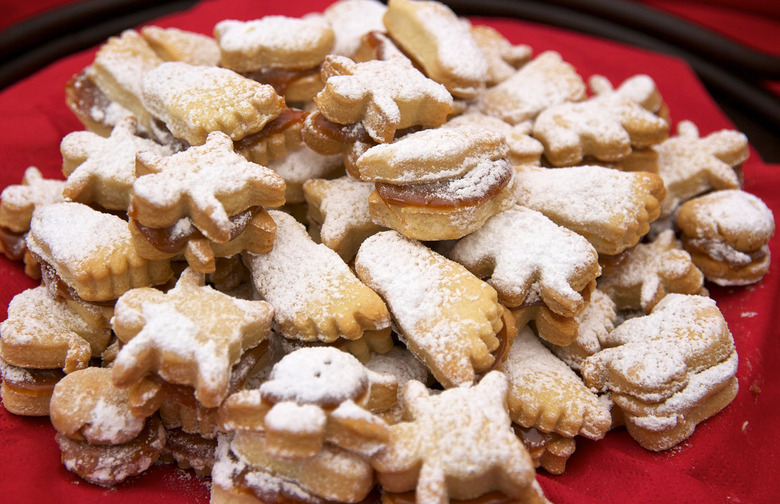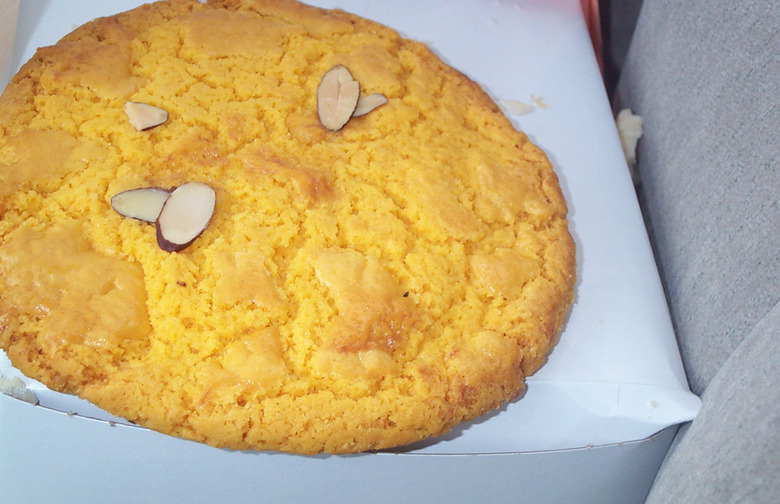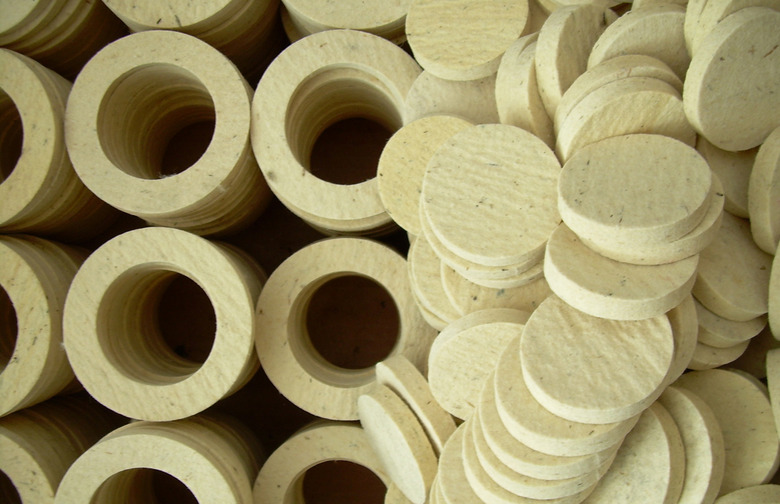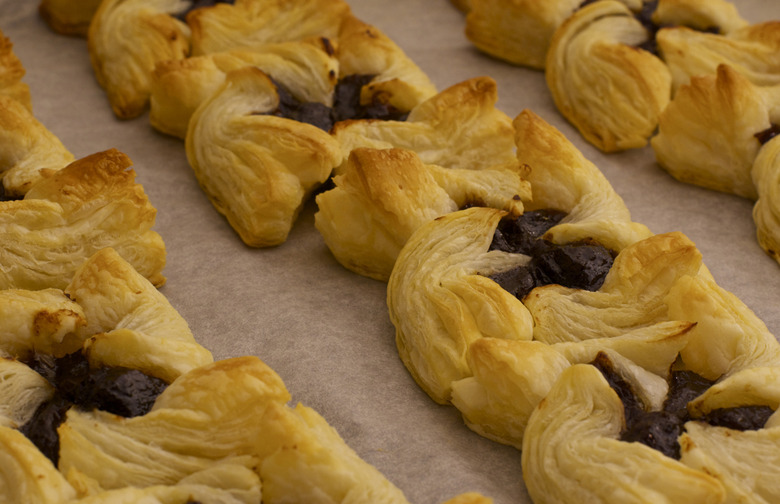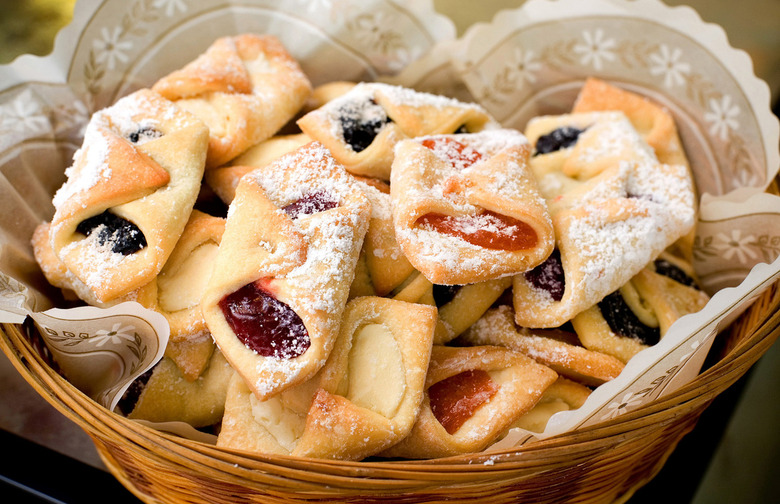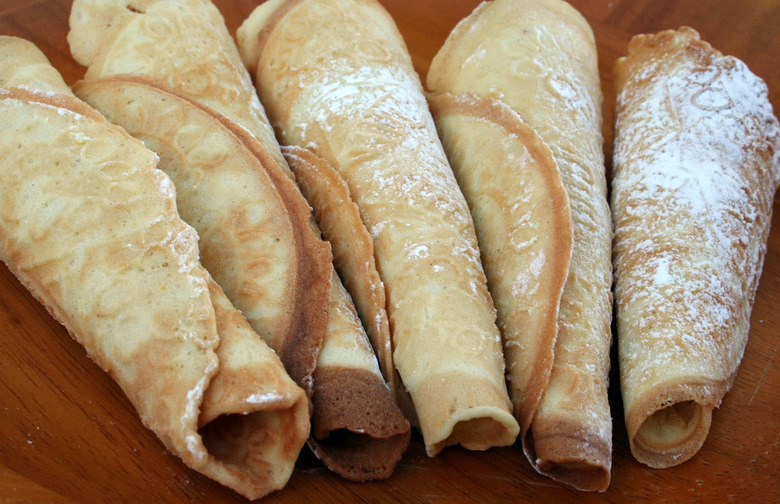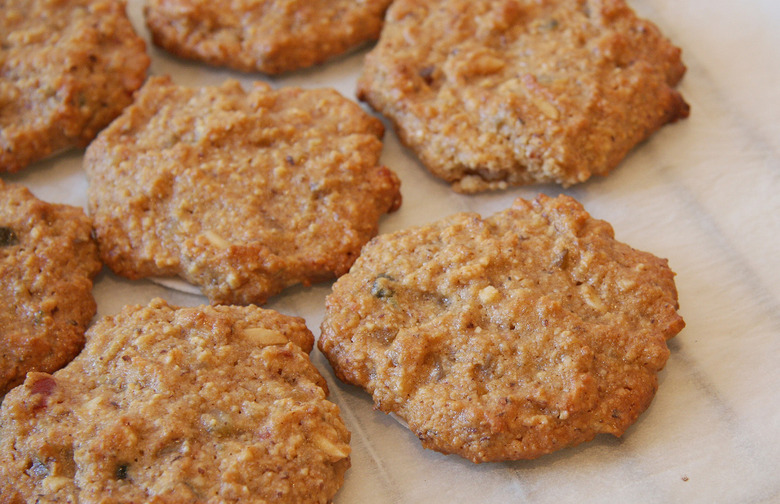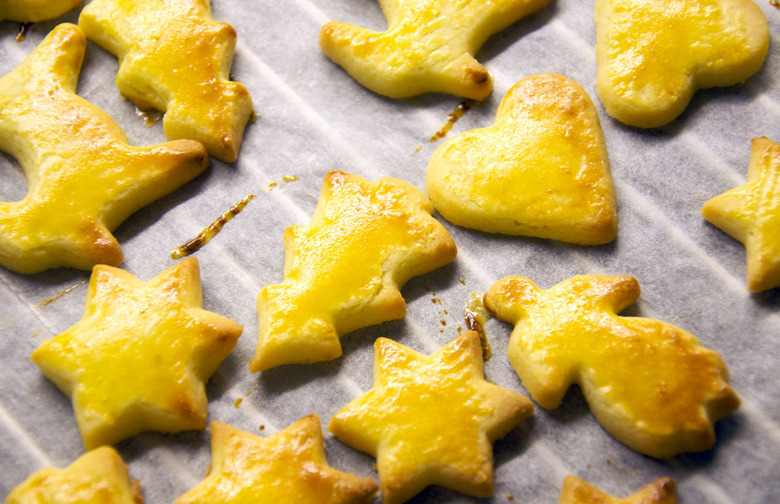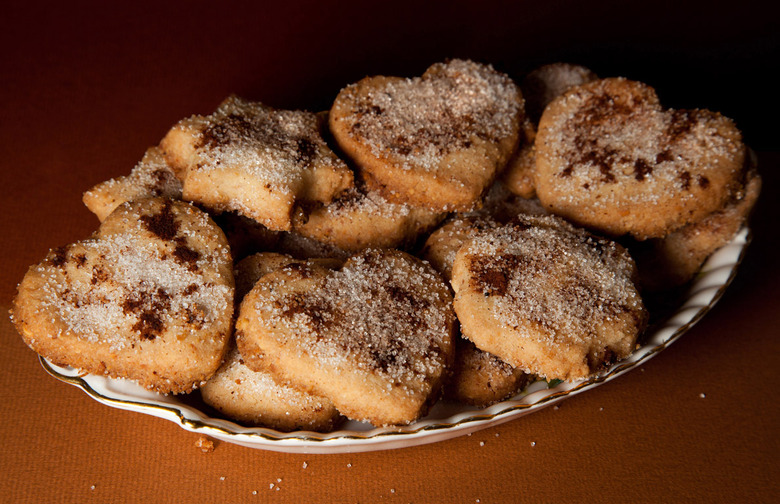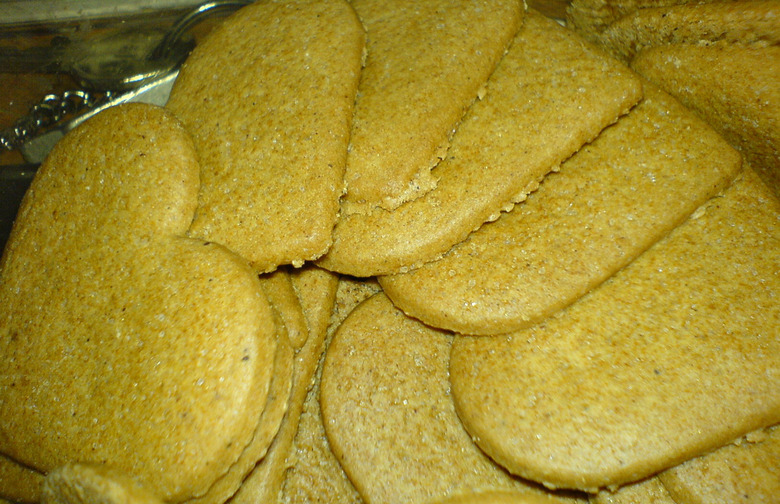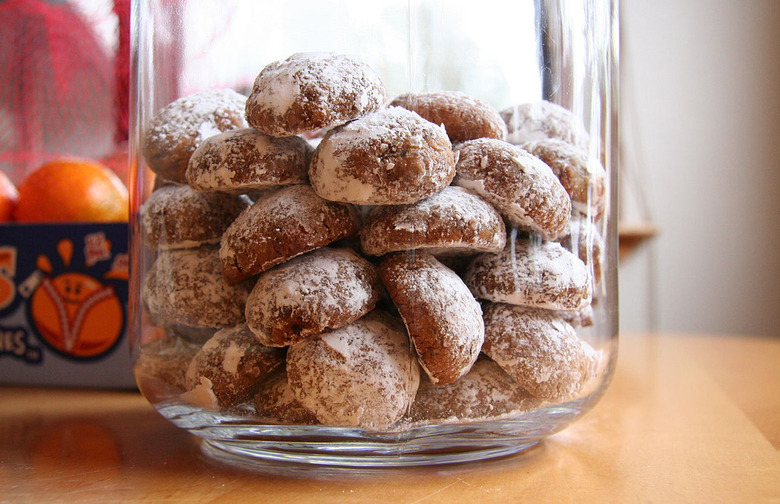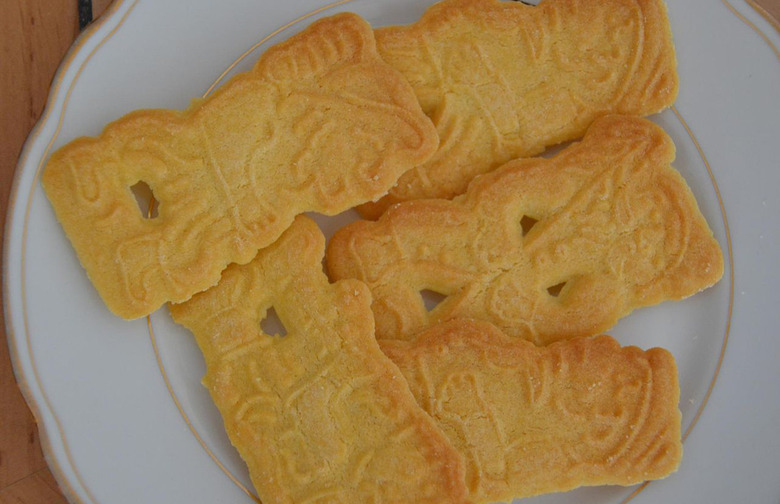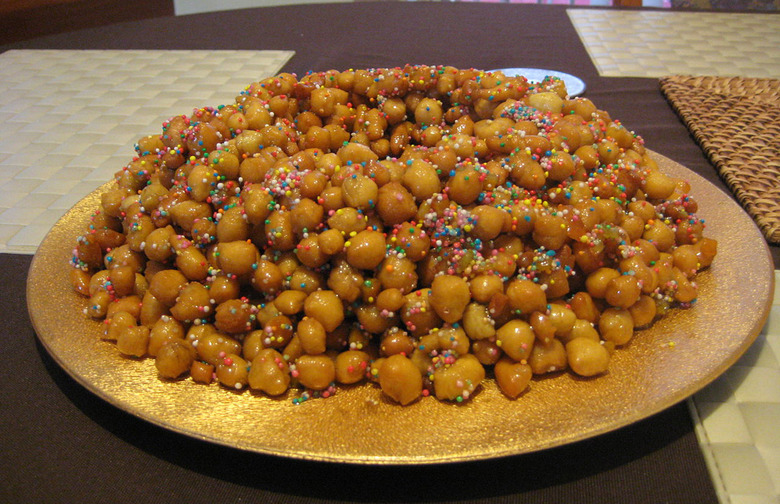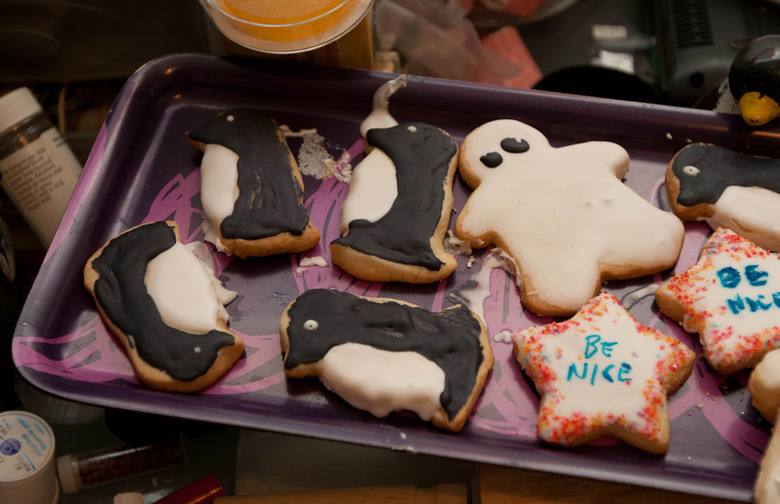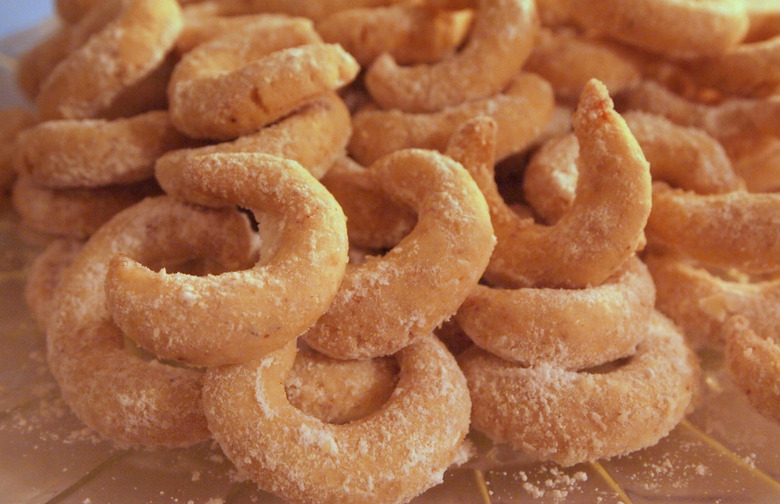15 Holiday Cookies From Other Countries Slideshow
During the holiday season in the United States, many would agree there isn't a better treat to complement a glass of eggnog than a warm gingerbread cookie. The smell of cinnamon is a sweet reminder of holiday cheer and the warmth that comes with being with loved ones. And just as children in the U.S. leave out treats for Santa Claus, many other cultures leave out different types of cookies and other foods for Father Christmas. Cookies are part of holiday celebrations all around the world, but different cultures enjoy their own traditional cookies.
In Norway and other parts of Scandinavia, cone-shaped cookies called krumkake are baked to celebrate the holidays. In Spain, shortbread cookies called mantecados are flavored with cinnamon and anise, and in Belgium and the Netherlands, speculaas are cut and carved into intricate depictions of St. Nicholas and other characters from his stories.
We've rounded up 15 holiday cookies from around the world to inspire you to try something new when baking with friends and family this year. Read on, and consider paying homage to another culture with your gift bags of holiday cookies this season.
Additional reporting by Haley Willard.
Alfajores (Argentina)
Varying recipes for these treats with dulce de leche spread between two butter cookies are enjoyed throughout Latin America, but they're especially prominent in Buenos Aires, where they are often served year-round as a treat to accompany coffee. During the holiday season, though, it's tradition to bake alfajores with one's unique family recipe.
Almond Cookies (China)
These almond cookies are often made in the home during the holiday season and are also a staple recipe to help ring in the Chinese New Year (this year, it'll begin on February 8). Ingredients include butter, sugar, sliced almonds, and an egg white.
Galletas Con Chochitos (Mexico)
These ring-shaped cookies are topped with colorful sprinkles — chocolate sprinkles for an everyday treat, and red and green ones for the holidays. They're made with egg yolks, vanilla extract, an egg white, and, of course, a variety of sprinkles.
Joulutorttu (Finland)
Joulutorttu are pinwheel-shaped Finnish holiday cookies or tarts that are traditionally filled with prunes or lingonberries. Making them usually entails a two-day process, where the pastry and filling are made on the first day, refrigerated overnight, and then assembled.
Kolaczki (Poland)
Krumkake (Scandinavia)
Lebkuchen (Germany)
Called either lebkuchen, meaning "gingerbread," or pfefferkuchen, meaning "pepper cookie," this cookie is softer than the traditional gingerbread cookie you may be used to. The German variation can be rectangular or round and has a sweet, slightly nutty taste. Similar recipes date back to ancient Egypt, but the most well-known variation of the cookie is the nürnberger lebkuchen, from the German city of Nürnberg, where it was made into creative shapes and designs and decorated by a professional guild of gingerbread makers, the Lebkuchner Guild.
Mailänderli (Switzerland)
Mailänderli are lemon-flavored shortbread cookies, which are cut into various shapes and sizes, are a traditional holiday cookie in Switzerland. They're made with a simple list of ingredients: margarine, eggs, sugar, and a pinch of salt.
Mantecados (Spain)
Spanish shortbread cookies, called mantecados, are exceedingly crumbly. The recipe calls for cinnamon, lemon peel, and egg white, but the cookies are also flavored with anise.
Pepparkakor (Sweden)
Similar in taste to a gingersnap cookie, a pepparkakor is made with maple syrup and is traditionally cut into the shape of a star or heart, although other traditional shapes include a pig or a goat. This Swedish holiday cookie is hung as an ornament on the Christmas tree. Another Swedish custom is to place a pepparkakor in the palm of your hand and make a wish. Then, using your index finger or thumb of your other hand, tap the center of the cookie. If the cookie breaks into three pieces, your wish will come true. If not, you'll still have a delicious cookie to eat.
Pfeffernüsse (The Netherlands)
Recipes for pfeffernüsse differ slightly depending on who you ask, but these tiny cookies, enjoyed during the holidays in the Netherlands, are commonly spiced with cinnamon, cloves, and anise. Other ingredients include molasses, honey, and margarine.
Speculaas (Belgium and the Netherlands)
In the Netherlands, the Christmas season begins on the second Saturday of November and continues through December 6th, which is St. Nicholas Day. In Belgium and the Netherlands, these spiced ginger cookies are elaborately cut and carved into depictions of St. Nicholas (or Sinterklaas, as he is called in this region) and other characters from stories about him by way of special wooden molds.
Struffoli (Italy)
Small round cookies called struffoli are baked for the holidays in Italy. They're also known as "honey balls," and they can usually be found piled in a tree-shaped mound or arranged to resemble a wreath. Ingredients include honey, eggs, and margarine, but the treats can be topped with sprinkles, toasted pine nuts, silver balls, or candied fruits.
Sugar Cookies (United States)
Snowmen, Christmas trees, presents, dreidels, and bells all come out to play during the holiday season in the United States — all in the form of sugar cookies. It's common to find elaborately iced, colorful cookies cut into seasonal shapes at holiday parties, and they're often also given as gifts. Gingerbread cookies are also an American classic.
Vanillekipferl (Austria)
A vanillekipferl is a crescent-shaped cookie that is made with ground almonds, walnuts, or hazelnuts, flavored with vanilla, and dusted with sugar. The cookie originates in Austria, but is served throughout central Europe during Christmastime.

